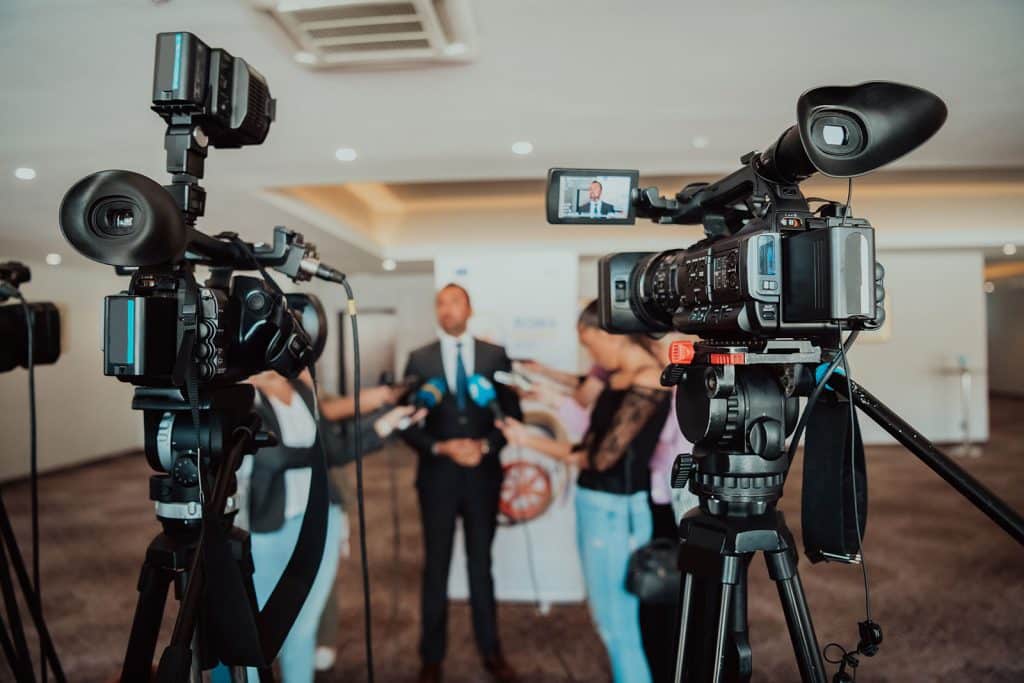You can have the best products or services, but without the right publicity, no one will know about them. This is why PR placements are at the heart of many companies’ success. They provide valuable exposure through trusted outlets that fuel brand awareness and drive customer engagement.
PR placements are very different from paid ads, which require ongoing spending for continued visibility. Let’s take a closer look at how these marketing tools work and how to use them to the fullest.
Defining PR Placements in Modern Media
PR stands for public relations, which is a must-have for any company that wants to build credibility and grow. PR placements are mentions, features or stories about your brand that appear in the media. It’s your responsibility to make sure they come from reputable outlets. This can be a bit tricky since PR placements have nothing to do with paid advertising. They occur naturally, making it all the more important to nurture partnerships and pitch strategically.
How PR Placements Differ From Advertising
Regular advertising initiatives usually occur through paid channels, platforms or campaigns. The business gets to control the whole scope of the ad, including the message, visuals and timing. With PR placements, you don’t have control of any element other than your initial pitch.
Plus, unlike paid advertising that ends when the budget ends, PR placements continue to live on through archives, links and search engines. The ongoing visibility means you get value for years to come.
Why You Need to Prioritize PR Placements
Letting your marketing team focus on PR placements is crucial to building a foundation of trust that paid ads alone can’t provide. Here are the top reasons you need to prioritize this strategy:
- Brand visibility: PR placements spread awareness quickly across trusted industry outlets.
- Credibility boost: Earned mentions carry weight by showing independent validation.
- Search engine value: Placements generate backlinks that improve website SEO rankings.
- Audience trust: Media mentions feel more authentic than paid marketing campaigns.
- Long-term impact: Placements remain searchable long after initial publication dates.
- Competitive advantage: Media coverage separates your business from local competitors.
- Cost efficiency: PR delivers strong value compared to expensive ad campaigns.
A smart marketing team will combine its PR placement strategy with other tactics to maximize impact. The goal is to emphasize the credibility of the brand in an organic, authentic way so that everyone takes notice. Customers are much more likely to have a positive response to a story that feels genuine instead of a paid promotion.

The Role of Media Relations in Securing Placements
Successful PR placement campaigns are built on strong media relations. Establishing trust with respected journalists, editors and influencers lays the groundwork for lasting brand visibility. All outreach to these professionals should be personalized, relevant and respectful of their editorial guidelines. You’ll have to do a lot of research to identify the right contacts and develop a worthy pitch. By consistently nurturing these relationships, you’ll find it much easier to secure valuable media coverage.
Steps in the PR Placement Process
Your marketing team needs a PR placement process in place tailored to the brand’s goals and audience. You can do this by:
- Identifying goals: Define what the placement should achieve for your brand.
- Researching outlets: Target publications that align with your audience’s interests.
- Crafting messaging: Develop concise, compelling narratives that attract journalist attention.
- Building media list: Create targeted lists of reporters and editors covering your niche.
- Personalizing pitches: Tailor each outreach email to fit the journalist’s beat.
- Providing assets: Share quotes, images or data that strengthen the story pitch.
- Following up: Respectfully reconnect if you don’t receive an immediate reply.
All of these steps are conducive to building both credibility and efficiency in your PR strategy. Each one is dependent on the other, so make sure not to skip any. Doing so weakens the whole process and takes away from the overall impact. With a methodical approach to PR placements, your business will gain visibility and develop relationships that last. Many brands handle these steps internally, but partnering with a trusted PR firm can streamline outreach and maximize placement success.
Why Earned Media Builds Stronger Brand Credibility
Audiences would much rather hear from independent journalists and industry experts who don’t have a sales agenda driving their views and opinions. This is why earned media works so much better than paid media. Consumers don’t have to stress about biases that blur credibility and increase skepticism. With PR media placements, you get the ultimate form of trust. The audience will see your brand’s authenticity through third-party validation.
How to Choose the Right Media Outlets for Placement
Choosing channels that match your brand and message is vital to effective PR placement. If you go at this strategy without much effort, you’ll end up with audiences who tune out and lose interest.
Tips for choosing media outlets that deliver results:
- National media: Offers broad exposure across wide-reaching platforms and publications.
- Local outlets: Strengthens community connections and regional visibility for brands.
- Trade publications: Reaches niche industry audiences with highly targeted relevance.
- Online blogs: Builds SEO benefits and drives referral traffic to websites.
- Podcasts: Provides conversational exposure and deeper engagement with listeners.
- Broadcast TV: Offers credibility and wide exposure through trusted visual storytelling.
- Social media: Amplifies placement reach by sharing with engaged online audiences.

Common Mistakes to Avoid With PR Placements
To do PR placement the right way, it helps to know the most common mistakes:
- Generic messaging and press releases: Sending bland, untargeted announcements reduces journalist interest and damages credibility.
- Poor timing: Pitching during busy news cycles reduces your chance of coverage.
- Lack of research: Sending irrelevant pitches damages relationships with reporters.
- Ignoring follow-up: Not checking in may cause missed opportunities for coverage.
- Overpromising results: Inflated claims can damage trust with both media and audiences.
- Failing to amplify: Not sharing placements limits long-term visibility and impact.
- Inconsistent outreach: Sporadic efforts prevent meaningful traction and recognition.
Taking time to avoid each of these pitfalls ensures your PR placements add value to your overall marketing strategy. Careful execution is what sets impactful campaigns apart from wasted outreach.
Contact SEO North today to learn more about PR placements and other digital marketing strategies.
FAQ
PR professionals rely heavily on strong communication skills and writing skills to craft compelling stories that resonate with the media and target audiences. In addition, strategic communication is critical for shaping messages across different channels, while adaptability and relationship-building remain core strengths. Many successful professionals also develop expertise in corporate communications, which helps them navigate both internal and external messaging effectively.
A PR internship is one of the best ways to gain hands-on experience in the industry. Whether part-time or full-time, working as a PR intern allows you to learn the fundamentals of media outreach, press release drafting, and client communication. These internship opportunities often provide access to mentorship from experienced professionals, making them a stepping stone toward roles at a PR agency or in-house communications team.
LinkedIn is a vital platform for anyone looking to grow in public relations. It allows you to showcase your skills, connect with PR professionals, and discover internship opportunities or jobs at a full-service PR agency. By sharing thought leadership posts and engaging with industry peers, you also demonstrate your communication skills and position yourself as someone serious about advancing in corporate communications.
